
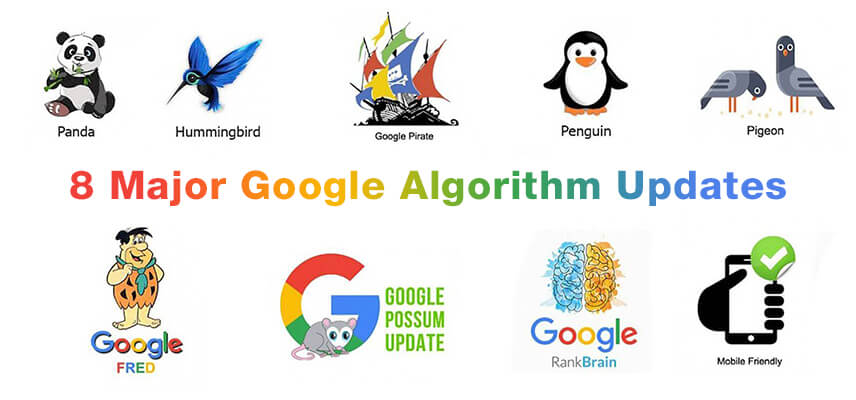
Google Algorithm Tracker
Relatively consistently, Google acquaints changes with its ranking algorithm. Some are modest changes; others truly shake up the SERPs. This cheat sheet will enable you to comprehend the most vital Google algorithm updates and punishments took off in the current years with a concise review and SEO guidance on each.
1. Panda

Launch date: February 24, 2011
Risks: Duplicate, plagiarized or thin content; client produced spam; keyword stuffing
How this Google algorithm updates work: Panda relegates a purported “quality score” to website pages; this score is then utilized as a ranking variable. At first, Panda was a channel as opposed to some portion of Google’s ranking also, however, in January 2016, it was formally joined into the center algorithm. Panda rollouts have turned out to be more successive, so the two punishments and recuperation now happen quicker.
The most effective method to adjust: Run standard site checks for content duplication, thin content and keyword stuffing. To do that, you’ll require a webpage crawler, as SEO PowerSuite’s Website Auditor.
To check for examples of outside content duplication, utilize a literary theft checker like Copyscape.
In the event that you have an online business webpage and can’t bear to have 100 percent extraordinary content, attempt to utilize unique pictures where you can, and use client audits to influence item depictions to emerge from the group.
Also Read – 8 SEO Techniques To Boost Technical SEO Knowledge For Beginners
2. Penguin
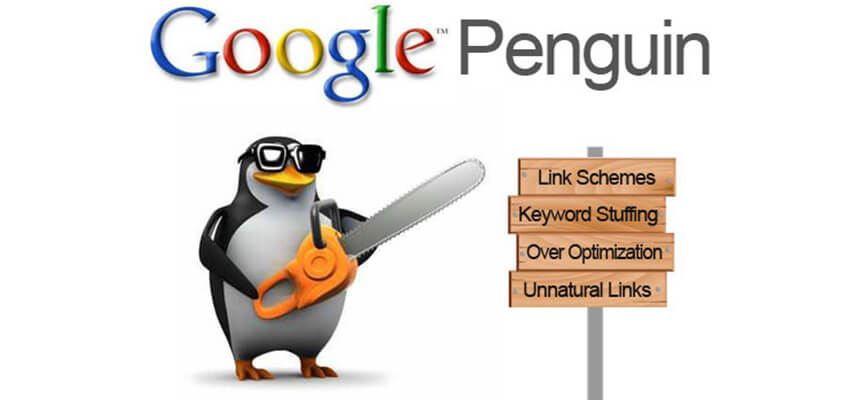
Launch date: April 24, 2012
Dangers: Spammy or irrelevant links; links with over-optimized anchor text
How this Google algorithm updates work: Google Penguin’s goal is to down-rank destinations whose links it esteems manipulative. Since late 2016, Penguin has been a piece of Google’s center algorithm; not at all like Panda, it works progressively.
The most effective method to adjust: Monitor your connection profile’s development and run consistent audits with a backlink checker like SEO SpyGlass. In the tool’s Summary dashboard, you’ll discover an advance diagram for your connection profile’s development. Pay special mind to any unordinary spikes: these are reason enough to investigate the backlinks you’ve out of the blue picked up.
The details that we know Penguin considers are joined into SEO SpyGlass’ Penalty Risk recipe. To check for punishment dangers, go to the Linking Domains dashboard, explore to the Link Penalty Risks tab, select your links, and snap Update Penalty Risk. At the point when the check is finished, check with the Penalty Risk segment, and make a point to investigate each connection with a score more than 50 percent.
3. Hummingbird

Launch date: August 22, 2013
Perils: Keyword stuffing; low-quality content
How this Google algorithm updates work: Hummingbird helps Google better interpret search queries and provide results that match searcher intent (rather than the individual terms inside the inquiry). While keywords keep on being critical, Hummingbird makes it possible for a page to rank for an inquiry regardless of whether it doesn’t contain the correct words the searcher entered. This is accomplished with the assistance of regular dialect handling that depends on inactive semantic ordering, co-happening terms and equivalent words.
The most effective method to adjust: Expand your keyword research and concentrate on ideas, not keywords. Deliberately research related searches, equivalent words and co-happening terms. Incredible wellsprings of such thoughts are Google Related Searches and Google Autocomplete. You’ll discover every one of them consolidated into Rank Tracker’s Keyword Research module.
Utilize these bits of knowledge to comprehend your group of onlookers’ dialect better and differentiate your content. By making far-reaching content that fulfills searcher purpose, you’ll win both as far as engagement and SEO. We’ll take a gander at in more detail later in this post when we talk about RankBrain.
4. Pigeon

Launch date: July 24, 2014 (US); December 22, 2014 (UK, Canada, Australia)
Dangers: Poor on-and off-page SEO
How this Google algorithm updates work: Pigeon influences those searches in which the client’s location has an essential impact. The update made nearer ties between the neighborhood algorithm and the center algorithm: customary SEO factors are currently used to rank nearby outcomes.
Professional SEO services will assist you if you engage in both on-page and off-page SEO. Running an on-page examination using a Website Auditor is a good first step. The Content Analysis dashboard of the application will provide you a wise idea of the aspects of on-page streamlining you need to focus on.
A decent method to begin with off-page SEO is getting recorded in pertinent professional resources. Not exclusively do those demonstrations like backlinks, helping your site rank; they rank well in Google themselves. You can without much of a stretch discover quality indexes and contact website admins requesting to get recorded with Link Assistant.
Simply click Look for Prospects, select Directories, and enter your keywords. It’s a smart thought to determine class keywords in addition to your location (e.g., “dental specialist Denver”). In a minute, the tools will restore a rundown of important registries in your specialty, alongside the site proprietor’s email addresses.
5. Mobile
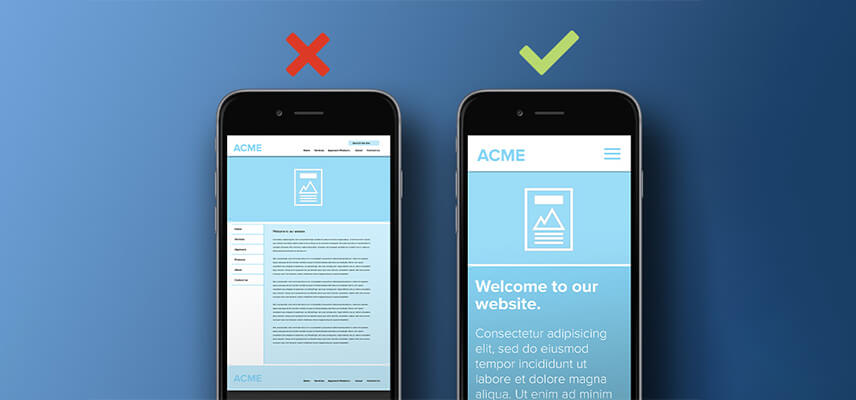
Launch date: April 21, 2015
Perils: Lack of a mobile adaptation of the page; poor mobile usability
How this Google algorithm updates work: Google’s Mobile Update (otherwise known as dMobilegeddon) guarantees that mobile-accommodating pages rank at the highest point of mobile search, pages not optimized for mobile are genuinely down-ranked.
The most effective method to adjust: Go mobile and concentrate on speed and usability. Google’s mobile-accommodating test will enable you to see which parts of your page’s mobile form should be made strides. The test in coordinated into WebSite Auditor so you can check your pages’ mobile invitingness rapidly. You’ll see it in Content Analysis > Page Audit, under the Technical components tab.
Also Read – Top 7 Mistakes To Avoid For Your ECommerce Site
6. RankBrain
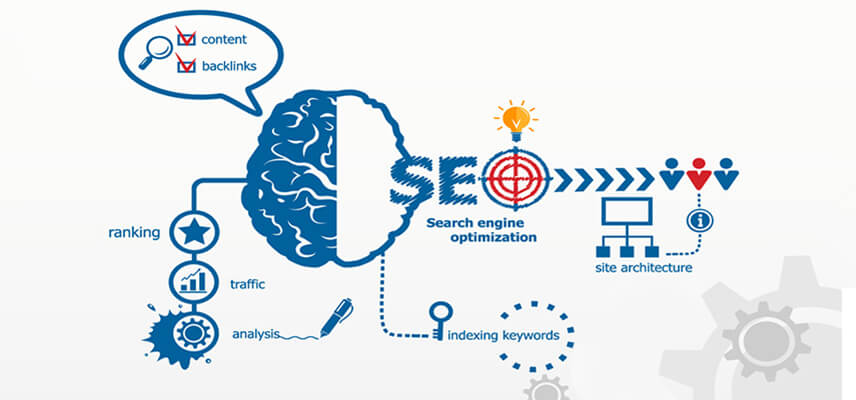
Launch date: October 26, 2015
Dangers: Lack of inquiry particular significance highlights; shallow content; poor UX
How this Google algorithm updates work: RankBrain is a piece of Google’s Hummingbird algorithm. It is a machine learning framework that enables Google to comprehend the importance behind queries, and serve best-coordinating search brings about the reaction to those queries. Google calls RankBrain the third most essential ranking element. While we don’t have the foggiest idea about the intricate details of RankBrain, the general conclusion is that it distinguishes importance highlights for website pages ranking for a given question, which are essentially inquiry particular ranking variables.
The most effective method to adjust: Optimize content for significance and extensiveness with the assistance of aggressive examination. With the assistance of WebSite Auditor’s TF-IDF tool, you can find applicable terms and ideas utilized by countless best ranking contenders: those are a splendid method to expand your content.
Also Read- Mobile Optimization Is In Vogue For Seo Consultant In 2017
7. Possum
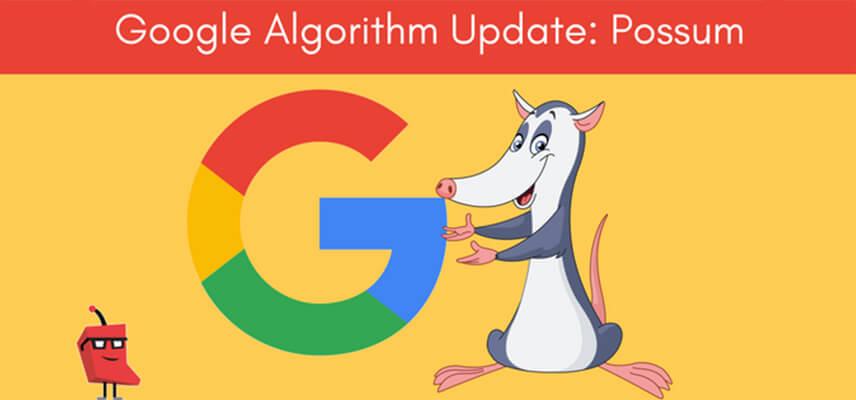
Launch date: September 1, 2016
Dangers: Tense rivalry in your target location
How this Google algorithm updates work: The Possum update guaranteed that nearby outcomes change all the more relying upon the searcher’s location: the nearer you are to a street number, the more probable you are to see it among neighborhood roundabout. Possum likewise brought about more prominent assortment among roundabout ranking for fundamentally the same as queries, similar to “dental practitioner denver” and “dental practitioner denver co.” Interestingly, Possum additionally gave a lift to organizations situated outside the physical city region.
The most effective method to adjust: Expand your keyword list and do location-particular rank following. Neighborhood organizations now should target a larger number of keywords that they used to, because of the unpredictability Possum brought into the nearby SERPs. As you check your rankings, ensure you’re doing this from your target location (or, even better, a bundle of them). You can do this in Rank Tracker under Preferences > Preferred Search Engines. Snap Add Custom beside Google. Next, determine your favored location — you can influence it as particular as a road to address.
8. Fred
Launch date: March 8, 2017
Risks: Thin, subsidiary substantial or promotion focused content
How this Google algorithm updates work: The most recent of Google’s affirmed updates, Fred targets sites that damage Google’s website admin guidelines. The lion’s share of influenced locales is web journals with low-quality presents that show up on be made for the most part to generate advertisement income. (What is this? Can you make this sentence make sense?)
The most effective method to adjust: Review Google Search Quality Guidelines and watch out for this content. On the off chance that you demonstrate promotions, ensure the pages they are found on are high caliber and offer important adequate data. This is fundamentally it: Don’t endeavor to trap Google into considering something when it truly is a portal page brimming with offshoot links. Most distributors profit off promotions, and that is absolutely genuine as long as you are not duping.






